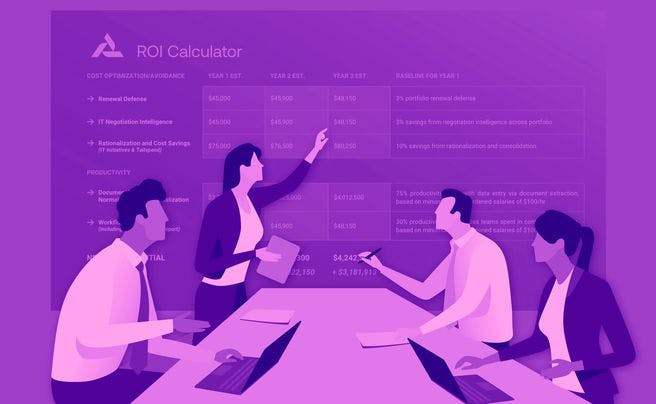I’ve spent my career working closely with Fortune 500 CIOs and CPOs representing Oracle, IBM and most recently Microsoft. I had no intention of leaving Microsoft until I kept hearing the same problem over and over from my customers.
A Fortune 50 CIO said, “I need you to build us a CRM, but for the buyer.” This opened my eyes to a huge market pain point and opportunity.
At large organizations, the vendor management process still relies heavily on spreadsheets and email. ERPs and P2Ps platforms are not designed for today’s vendor management challenges.
Enterprises are starting to realize the impact their vendors have on their own business performance. Increasingly, leaders are looking to transform transactional relationships to strategic partnerships. If leaders expect more from their own business, they need to get more out of their suppliers.
This has resulted in an evolved viewpoint, where vendor relationships are seen as strategic opportunities and sources of competitive differentiation.These relationships are critical to innovation and digital transformation, especially with technology suppliers like Microsoft and AWS and service vendors like Accenture and IBM.
What is Vendor Relationship Management?
The exact opposite of Customer Relationship Management (CRM), Vendor Relationship Management (VRM) refers to the processes and tools you use to manage your third-party vendors.
I’m not referring to the suppliers who provide styrofoam cups for the office kitchen, you can manage those commodity suppliers with tools like Coupa or SAP Ariba. Terzo’s VRM optimizes value with your strategic vendors; the mission critical vendors like Oracle, Salesforce and ServiceNow.
Step 1 of vendor relationship management is developing partnerships and increasing collaboration with internal stakeholders across business functions. Organizations need to break through silos to communicate effectively across multiple business units. Executive teams need visibility.
Step 2 is creating collaborative partnerships with external stakeholders by directly engaging the vendor account teams. It’s important to identify the vendors, which are critical to your business results and implement processes to manage those relationships strategically.
Organizations need to think of vendors as business partners and put stakeholder collaboration at the center of their strategy. In a recent article, HBR explains why the most innovative companies are starting to treat strategic vendors more like they treat their own employees.
They conclude that Vendor Relationship Management is a top priority at the best performing companies. I couldn’t agree more.
Today, Vendor Relationship Management is Messy
Vendor Relationship Management is a massive challenge and opportunity. Organizations don’t have the solutions they need to optimize their vendor ecosystem. Traditional ERPs and P2Ps don’t cut it for Vendor Management.
Spreadsheets are the workhorse, which is insane. The largest companies in the world still rely on spreadsheets, email and other point solutions for critical information like key contract terms and actual vs committed spend data.
 Enterprises lack data centralization. Finance uses ERP, procurement uses P2P and IT uses a combination of solutions like Apptio and ServiceNow. There really is no single source of truth and all these platforms make it impossible to collaborate. Data is siloed and leaders can’t gain insights to make strategic decisions.
Enterprises lack data centralization. Finance uses ERP, procurement uses P2P and IT uses a combination of solutions like Apptio and ServiceNow. There really is no single source of truth and all these platforms make it impossible to collaborate. Data is siloed and leaders can’t gain insights to make strategic decisions.
Contract intelligence is non-existent. I’ve sold over $200M worth of IT related contracts in my career and I’ve never seen one customer use a digital platform to interpret or even access the contract. Contract Lifecycle Management tools like iCertis are built for legal use cases, not vendor management or procurement.
Relationship management is essentially email, like it has been for 20+ years. Every sales person in the world uses a CRM to manage their customer contacts, but buyers don’t have a centralized platform to manage all the salespeople and other external stakeholders they work with. This leads to unnecessary data fetching and talking to the “wrong people” to figure out who the “right people” are.
Performance is not tracked and measured against contractual obligations, never mind performance tracked against organizational goals. Most enterprises only track service-level agreements (SLAs) as the key indicator of performance - and often only within IT Ops. Leaders are often unaware of complex issues, red flags, new risks, or negative trends until there is a serious problem. Leaders also struggle to assess their vendors over time, as critical business needs shift and strategic goals rapidly change.
Introducing Terzo, the VRM.
Sales and marketing teams are well orchestrated and can’t operate without a CRM like Salesforce or HubSpot.
What’s interesting is there is more complexity in the buyer lifecycle than there is on the seller side!
Vendor management and procurement teams should be orchestrated as well as sales teams. CIOs should have as much visibility as CROs. Instead of driving revenue directly, they’re driving innovation and performance, which indirectly drives revenue.
Buyers need a Vendor Relationship Management (VRM) solution built for the 21st century.
Terzo is the first Vendor Relationship Management (VRM) platform. VRM helps enterprises transform vendors into partners. IT and Procurement teams build stronger relationships, make smarter decisions and optimize performance with Terzo VRM.
We took feedback from across the Fortune 500 to create a collaboration platform that integrates and centralizes vendor data from existing systems. Terzo is the vendor hub.
 Terzo connects stakeholders to create trust, improve relationships and drive innovation.
Terzo connects stakeholders to create trust, improve relationships and drive innovation.
Connect with us so we can learn more about your vendor relationship challenges.




